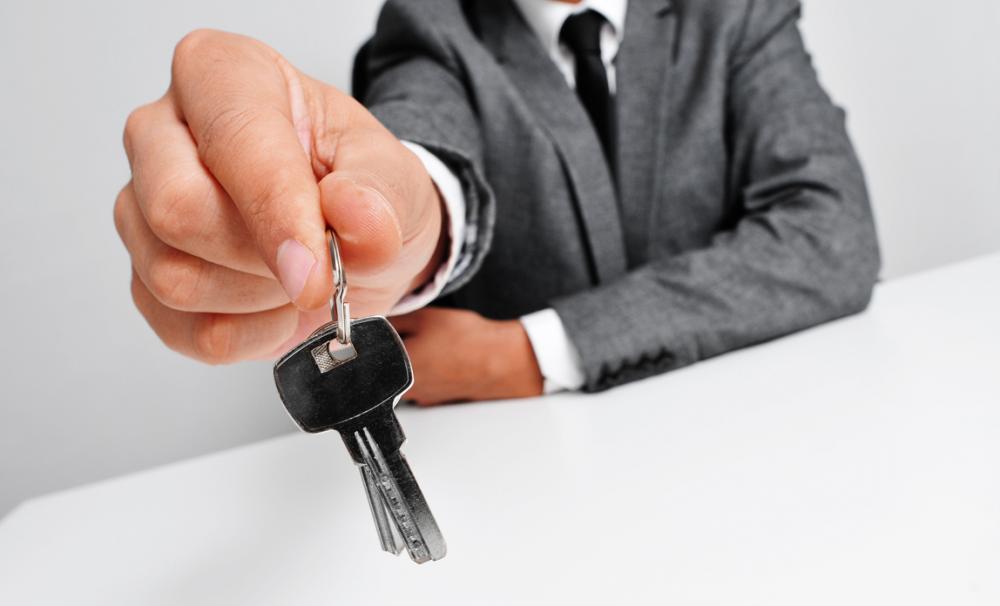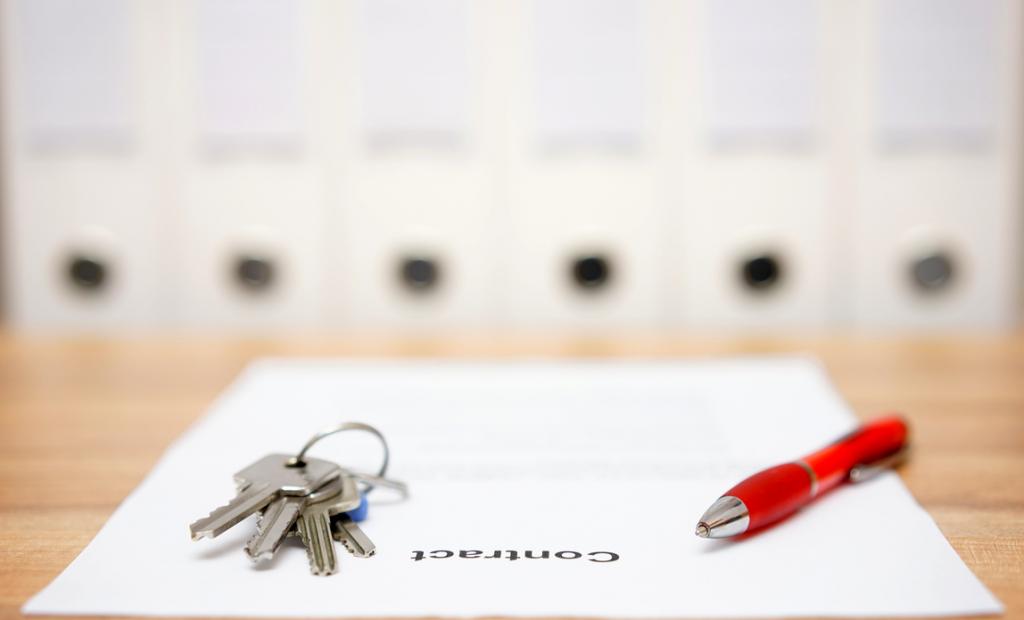Leasing is a simple financial instrument. which makes it possible to purchase fixed assets by installments, but on non-standard conditions. There is one caveat in this scheme. The object is physically transferred to the client, but legally it does not belong to him. Therefore, the second name of this instrument is a lease with subsequent redemption.
The essence of the term
In business activities, leasing is used as a form of lending for the purchase of fixed assets. Under the agreement, the lessor agrees to purchase the specified property from a specific seller and provide it to the lessee for a fee for temporary use. Relations between the parties are regulated by Art. 665 and 666 of the Civil Code of the Russian Federation. The subject of the transaction is the property of the lessor, but the right to use it passes to the lessee in full. For using the subject of the transaction, lease payments are paid. Their size, type and repayment schedule are prescribed in the contract. The subject of the transaction may be recorded on the balance sheet of one of the parties. Next, the main transactions in leasing will be examined in detail.

For whom?
Why do I need leasing if I can make an installment purchase? The customer receives the goods, which acts as collateral for the loan. The buyer repays the debt in parts and uses the thing. In practice, a situation often arises when owning some OS is unprofitable. What are the tax aspects of object design alone? Or another situation. The entrepreneur decided to close the business, the acquired machine tool became unnecessary. If it was bought on credit, then the “rollback” of the operation requires large movements. Not to mention the fact that the buyer is technically forced to be in the state of a deadbeat. If leasing was made, then it is enough to terminate the contract and return the property to the seller.
Where is leasing applied in personal purchases? When buying a car, the owner must pay insurance and inspection. If the transaction is leased, then these costs are allocated to monthly payments. In the event of a divorce, property leased out does not fall into the general health category. Do not forget about people for whom even a three-year-old car is old. It is very difficult to cancel a loan at the bank, but you can always return the car to the lessor and arrange a new deal.
Therefore, in practice, this financial instrument is increasingly used in the small business segment. Entrepreneurs rent commercial vehicles, special equipment, equipment and real estate. Not every bank is ready to issue a loan for a tractor or drill rig on favorable terms. Leasing companies are less picky in this matter. They do not check in detail the credit history of the client and his solvency. But for the quick execution of the transaction you will have to pay a large initial commission and prepare an advance of 30% of the value of the object.

In general, leasing is beneficial to the state: by providing tax benefits, it creates a flow of investment in priority sectors. Sellers expand the market and receive income from the sale of spare parts for equipment, from service and modernization.By providing loans, banks expand their customer base. The main disadvantage of the scheme is its complexity. The lessor, lessee, seller and bank participate in the transaction. It is also worth noting that government agencies very carefully check such transactions. Next, we will consider the tax features of paperwork on leasing, posting at the lessee and the lessor.
The object is recorded with the lessee
In accounting (BU), property received under leasing is accounted for as property, plant and equipment. Its initial value consists of the sum of all payments under the contract, including the redemption value. Additionally, open subaccounts to the account. 76, 01, 02 for accounting for advance payments, total debt, current payments, redemption value, property and depreciation payments. The table below shows the lease transactions on the lessee's balance sheet.
| Wiring | Operation |
| DT76 KT51 | Advance Transferred |
| DT19 CT76 | VAT Reflected |
| DT68 CT19 | Accepted for VAT deduction |
| DT08 CT76 | Property Received |
| DT19 CT76 | Reflected VAT under the contract |
| DT01 KT08 | Property included in OS |
| DT76 CT76 | Accrued lease payment |
| DT68 CT19 | Accepted for VAT deduction |
| DT76 KT51 | Payment Paid |
| DT76 CT76 | Advance paid |
| DT76 CT68 | VAT recovered |
| DT20 (26, 44) KT02 | Depreciation accrued |
| DT02 CT01 | Written off the value of the property at the end of the contract |
These are the leasing transactions that are formed on the balance sheet of the lessee. In calculating income tax, monthly payments, redemption value and depreciation are recognized.

The object is recorded with the lessor
In BU, property is reflected in the off-balance account 001 in the amount of all payments under the contract. To account for advance, current payments and redemption value, you should open a subaccount to the account. 76. The table below shows the lease transactions on the lessor's balance sheet.
| Wiring | Operation |
| DT76 KT51 | Advance Transferred |
| DT001 | Property Received |
| DT20 CT76 | Accrued lease payment |
| DT19 CT76 | VAT Reflected |
| DT68 CT19 | Accepted for VAT deduction |
| DT76 KT51 | Payment made |
| DT76 CT76 | Down payment taken into account |
| K 001 | Property derecognized |
When calculating income tax, expenses are recognized as monthly payments and redemption value. Payments are recognized in other expenses in the periods for which they are accrued. The cost is reflected only at the end of the contract and after the transfer of ownership to the organization:
- if it is less than 100 thousand rubles. - at a time;
- if it is more than 100 thousand rubles. - as the cost of buying an OS
Advantages and disadvantages for the lender
Having dealt with how to capitalize the property on a lease, with postings from the lessee and the lender, we consider all the nuances of the transaction. The lessor receives income in the form of the difference between the amount of payments and the value of the item. The risks in the transaction are minimal, since not monetary resources are transferred, but means of production. Moreover, the lessor legally remains their owner. There are other benefits. If payments are not transferred more than two times after the specified period has passed, they are debited from the account of the lessee (Article 13 of the Federal Law No. 164). The lessor has the right to demand early termination of the contract and return of property. Moral and physical wear and tear is minimized, since most often the object is redeemed. The main disadvantage is the large one-time costs of finding a seller, buying an object and obtaining a loan for it.
Advantages and disadvantages for the customer
The main advantage of the operation is the ability of the customer to obtain the necessary property without distracting working capital. This is valuable for small and medium enterprises that do not have a positive credit history. The contract is concluded without collateral and sureties for a longer period than a loan. The main disadvantage of the transaction is that the total amount of expenses is higher than when obtaining a loan. The object becomes property only after repurchase.Since property is most often purchased on credit, banks are reinsured and draw up contracts on a floating rate basis. Leasing is made out only after making an advance payment. It acts as insurance against the lessor against possible losses on the transaction. In case of non-compliance with payment discipline, the company will try to pick up the property and sell it. If the parties fail to agree, then issues will have to be resolved in lengthy litigation.

Tax Accounting (NU)
Having figured out which transactions are used in leasing, we turn to the issue of taxation of operations. The lessor the initial value of the object is formed from the costs of its purchase, delivery and bringing to a suitable condition. The lessee does not reflect in the costs the costs of delivery and preparation of equipment for work. All expenses related to settlements with the supplier under the letter of credit relate to non-operating expenses for the payment of communication services.
If the property received is not included in the 1-3 depreciation groups, the taxpayer has the right to apply the non-linear depreciation method and increasing coefficient 3. The depreciation premium can be used only after the purchase of the property.
Costs of the purchase of an object are recognized as such in the periods prescribed in the contract. They are recorded in the proportional amount of payments. The income received is allocated to non-operating, if the leasing activity is not the main one for the lessor.
The lessee deducts all sent payments to other expenses. If the property is on its balance sheet, then expenses are accepted for taxation less depreciation. The redemption price of the leased asset is included in expenses for the purchase of fixed assets. Monthly payments can be attributed to other expenses only in terms of payment for receiving the item for temporary use. The redemption price is not taken into account for tax purposes. In the absence of it in the contract, financiers propose to consider as such the amount of lease payments.

VAT and other taxes
For the lessor, the provision of services in the Russian Federation is subject to taxation. VAT is paid on the total amount of payments and the purchase price. The seller submitted the VAT is deductible after registration of the property.
The procedure for paying property tax depends on the type of object:
- For real estate, for which the accrual basis is the cadastral value, tax is paid by lessors, that is, owners.
- For all other objects, the tax is paid by the one on whose balance it is taken into account.
Vehicle tax is paid by the owner of the vehicle.
Leasing transactions in 1C from the supplier
On the basis of the act or invoice, the document “Receipt” is generated with the type of operation “Equipment”. The tabular part of the document indicates the nomenclature, its quantity, price with VAT. After the lease agreement is specified, the transactions are formed as follows: Dt08.04.1 Kt60.01 and Dt19.01 Kt60.01.
The next stage is “Acceptance of OS accounting”. On the tab “Non-current asset” the type “Equipment” is indicated, the method of purchase is “For a fee”. On the “OS” tab, the name, accounting group, OKOF and depreciation group are registered: the amount, period of use and the way depreciation is reflected. The document forms the postings DT03.01 KT08.04 and DT68.02 KT19.01. After payment of funds to the seller, a payment order is generated.

To transfer the property for rent, it is necessary to create a document “Operations entered manually” and through “More” select the information register “Accounts OS”. As a result, such leasing transactions are formed in 1C 8.3: DT03.03 KT03.01.
Monthly payments are charged by the document “Implementation”: DT62.01 KT90.01.1 and DT90.03 KT68.02.
All payments are made by the document “Receipt to the current account” with the form “Receipt from the buyer”.
Upon completion of the contract, you can sell the object through the "disposal of OS" or "transfer of OS."
Leasing on the lessee's balance sheet: transactions in 1C
Recognition of lease payments and depreciation is carried out upon closing the month with the help of routine operations. Payment is reflected in the payment order by debiting funds from the current account.All these operations are necessary for the correct accounting of leasing in customer transactions.
First, the equipment must be taken to an off-balance account. To do this, in the document "Operations entered manually" you should specify the nomenclature, its quantity and indicate the account DT001.
Upon receipt of the act from the lessor, a document “Receipt” is created with the type of nomenclature “Leasing services”. It also indicates the amount, VAT and the agreement by which settlements are made: ДТ20.01 КТ76.05 and ДТ9.04 КТ76.05. The payment amount includes monthly accruals and a portion of the purchase price. Therefore, the documents “Payment order” and “Write-off from the current account” form such leasing transactions in 1C: DT76.05 KT51 and DT60.02 KT51.
Upon the expiration of the contract, the equipment must be debited from the off-balance sheet account (КТ001) and credited to the OS accounting account: ДТ01.01 КТ02.01. For this, two documents are created: “Receipt of acts” and further “Acceptance for accounting”. They form such transactions: DT08.04 KT60.01, DT19.01 KT60.01, DT60.01 KT60.02, DT01.01 KT08.04.
Features of accounting for legal entities
Both individuals and legal entities can take a car for long-term rent. However, the obligation to record such operations in the accounting and financial statements applies only to entrepreneurs. At the same time, legal entities can reduce the tax base and deduct the VAT transferred to the seller. This applies only to organizations that are on a common taxation system. If the USN (income) or UTII scheme is applied, then lease payments do not reduce the tax base. The leasing transactions used by the lessor are the same as previously presented.

Example
The company acquired the operating system and transferred it to the lessee. The cost of the item under the contract is 354 thousand rubles. The lease agreement is drawn up for two years. The useful life of the facility in NU and BU is 6 years. The NU applies an accelerated depreciation rate of 2. Monthly deductions are:
- in BU - 4166.67 rubles .;
- At NU - 8333.34 rubles.
Total payments - 708 thousand rubles. Every month, 29.5 thousand rubles are transferred to the company. (708/24). How to reflect leasing? The lessor's transactions are presented below:
DT08 KT60 - 300 thousand rubles. - acquired property.
DT19 KT60 - 54 thousand rubles. - Reflected VAT.
DT60 KT51 - 354 thousand rubles. - bill paid.
DT03 KT08 - 300 thousand rubles. - the property is accepted for accounting.
DT68 KT19 - 54 thousand rubles. - VAT is deductible.
DT03 / 2 KT03 / 1 - 300 thousand rubles. - leased property transferred.
How is leasing accounting reflected monthly? Postings are presented below:
DT20 (44) KT02— 4166.67 rubles. - depreciation is charged.
DT62 (76) KT90— 29.5 thousand rubles. - reflected the debt of the recipient.
DT90 KT68 - 4.5 thousand rubles. - VAT is allocated.
DT90 KT20 (44) - 4166.67 rubles. - reflected depreciation.
DT51 KT62 (76) - 29.5 thousand rubles. - payment received.
DT68 KT77 - 833.33 rubles. (4166.67 x 0.2) - accrued tax liability for the difference in depreciation of NU and BU;
DT03 / 1 KT03 / 2 - 300 thousand rubles. - the leased asset has been written off.
If at the end of the contract the property becomes the property of the recipient, and the redemption value corresponds to a monthly payment, then instead of the last transaction you need to reflect such transactions:
DT51 KT62 - 29 500 rubles. - payment of redemption value.
DT02 KT03 / 2 - 100 thousand rubles. - written off accrued depreciation.
DT91 / 2 KT03 / 2 - 200 thousand rubles. - written off residual value.
DT62 KT91 / 1 - 29 500 rubles. - other incomes are reflected.
DT91 / 2 KT68 - 4500 rub. - accrued VAT.
DT77 KT68 - 20 thousand rubles. - the tax liability is extinguished at the time of disposal of the property.
Here is how leasing is made out.









